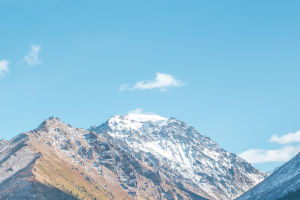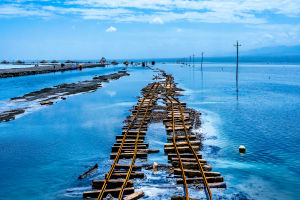Nature never ceases to amaze us with its captivating wonders. Among its many enchanting gifts, the waterfall stands as a majestic masterpiece, offering a mesmerizing spectacle of power and serenity.
As a breathtaking display of cascading water, waterfalls hold an inherent charm that has captivated the hearts of poets, adventurers, and nature enthusiasts throughout history.
We will delve into the intricate details of waterfalls, exploring their formation, diverse types, and the profound impact they have on both the environment and human imagination.
Formation and Dynamics:
Waterfalls are formed when rivers or streams flow over a steep edge or a cliff, creating a stunning vertical drop. The dynamic forces of gravity, erosion, and weathering work in harmony, shaping the landscape over millions of years and giving rise to these natural wonders.
The source of a waterfall is typically a body of water such as a river or a mountain stream, which flows with unyielding momentum until it reaches the precipice. As gravity takes over, the water plummets downward, transforming into a magnificent cascade.
Types of Waterfalls:
Waterfalls exhibit a rich diversity, each with its unique characteristics and charm. Some of the notable types include:
1. Plunge Waterfalls: Characterized by a vertical drop, plunge waterfalls showcase a powerful force as water descends freely into a plunge pool below. The force of the impact often gives rise to a cloud of mist and a thunderous roar.
2. Horsetail Waterfalls: Resembling the graceful tail of a horse, horsetail waterfalls maintain continuous contact with the underlying rock face. They often display a delicate and elegant flow as the water gently descends.
3. Tiered Waterfalls: These majestic waterfalls consist of a series of distinct vertical drops or tiers, creating a mesmerizing multi-level cascade. Each tier contributes to the symphony of falling water, adding to the spectacle.
4. Punchbowl Waterfalls: Named for their bowl-shaped basin at the base, these waterfalls captivate with their circular or semi-circular form. The water plunges into the basin, creating a circular pool with a serene ambiance.
Ecosystem and Environmental Impact:
Waterfalls are not only breathtaking to behold but also play a vital role in the ecosystem. The constant flow of water supports a diverse range of flora and fauna. Plants and mosses thrive in the moist environment, while fish and other aquatic creatures find sanctuary in the plunge pools.
Waterfalls also act as natural filters, improving water quality as the cascading water breaks up and aerates, enhancing oxygen levels.
Human Fascination and Cultural Significance:
Throughout history, waterfalls have inspired human imagination, finding their place in art, literature, and mythology. The sheer grandeur and raw power of waterfalls have symbolized both beauty and danger.
Many ancient civilizations regarded waterfalls as sacred sites, attributing them to mystical and spiritual significance. Artists have sought to capture their ethereal beauty, while poets and writers have used them as metaphors for life's journey and the pursuit of knowledge.
Recreational and Touristic Appeal:
Beyond their natural allure, waterfalls attract countless visitors seeking solace in their pristine surroundings. Their breathtaking vistas and invigorating energy make them popular destinations for outdoor enthusiasts, hikers, and photographers.
Waterfall hikes provide an opportunity to connect with nature, offering a sense of tranquility and awe-inspiring beauty that rejuvenates the soul.
Waterfalls stand as exquisite masterpieces, sculpted by the relentless forces of nature over vast periods. Their captivating charm, diverse forms, and profound impact on the ecosystem and human imagination make them an integral part of our natural heritage.


